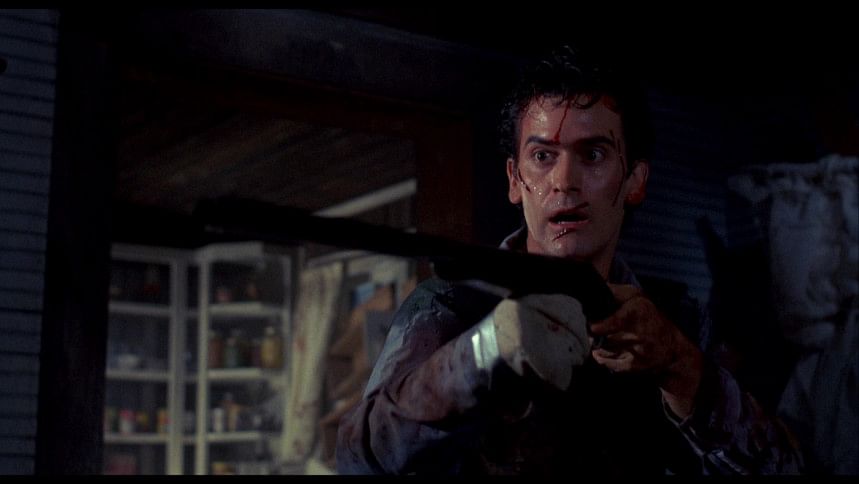Shock value is overrated

Psychological thrillers and horror content exist to strike fear within its viewers, which is generally an emotion most people try to avoid. However, some seek it for the rush of excitement it can provide. Different forms of media can employ unique ways of going about this, but perhaps the most common method is using shock value. In short, shock value can be defined as anything which forcefully induces negative emotions or reactions, and in this case, it's to scare people. In the case of such movies, it's usually in the form of either violence or jump scares.
However, shock value can be overdone, and it gets to the point where the fear in exchange for the thrill doesn't feel worth it. Eventually, it can become a very grating experience. For example, movies like the Evil Dead franchise or the Guinea Pig series are chock full of jump scares and gore. Even though they are marketed towards the more seasoned viewers, they too can feel queasy by such films. Also, not all horror enthusiasts have such high tolerance for violent content and can find them triggering. This can alienate certain horror fans, as they may feel like they are missing out because they cannot tolerate such extreme content.
Regular viewing of such content can have a detrimental effect on mental health as well. People may become more paranoid or anxious, which can affect their daily lives. Additionally, research has shown that watching violent media can increase aggressive behaviour as it weakens the activity of the brain network responsible for suppressing such emotions.
Furthermore, it can be argued that any form of media that is not dependent on shock value can be more effective in inducing fear. Every horror fan has at least heard of The Blair Witch Project, if they haven't watched it already. The movie is not graphic at all, and has no jump scares. Yet, it is still considered terrifying because of how perfectly it sets up a horrifying atmosphere through using only found-footage style of filming and the nuanced, off-screen horror elements. Another famous movie that unintentionally achieves this is Texas Chainsaw Massacre. Despite how the name sounds, the film is not actually very bloody or gory, as the director wished for it to have a PG rating. Much of the violence is left up to the viewers' imagination, which ended up making it even more terrifying.
An underrated feature of horror or thriller movies is the sense of satisfaction they provide. Instead of simply describing everything going on in a graphic or expository way, the creator can sprinkle hints throughout and let the viewers piece the story together by themselves. Books like Stephen King's Carrie, Gillian Flynn's Gone Girl, are two very popular horror and psychological thriller books respectively that fall under this umbrella. They use unique storytelling methods over outright stating exactly what happens, and allow the readers to unravel the plot. Even if the endings themselves are not happy, they do leave the readers with the gratification of being able to figure out the story.
Psychological thrillers and horror can be the source of some of the most emotionally-stimulating content. Even though shock value is the most popular way of conveying this, maybe we should rethink the effect it has on us, and that there are better ways to consume such media.
References:
ScienceDaily (December 10, 2007). This is your brain on violent media.
Screen Rant (January 26, 2020). Why the Texas Chainsaw Massacre wasn't bloody or gory.
Namreen is sick and tired. Send a reminder that life goes on at [email protected]

 For all latest news, follow The Daily Star's Google News channel.
For all latest news, follow The Daily Star's Google News channel. 








Comments